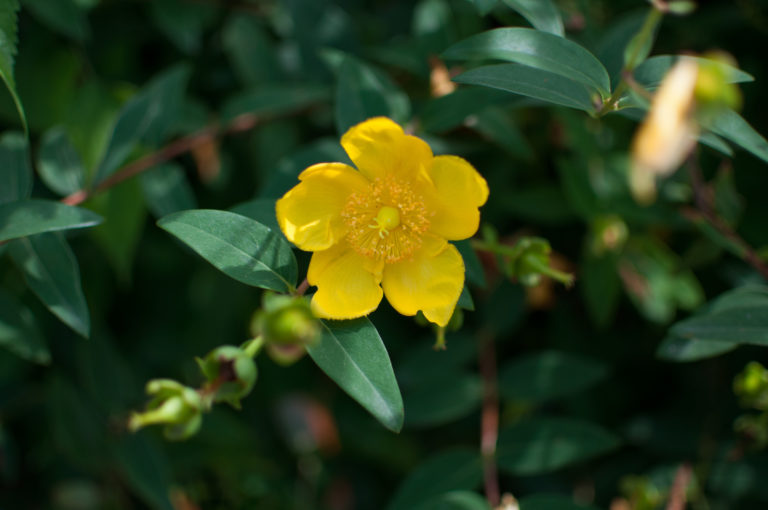Last updated on November 27th, 2023 at 09:34 am

The bright blooming flowers of the yellow jasmine vine are a welcome sign of spring, but they also hide a mysterious dark side. Throughout history, this plant has held the power to both heal and harm. Read on to uncover more about this intoxicating botanical and how the homeopathic preparation can help calm nervous tension associated with public speaking.
In History
Yellow jasmine (Gelsemium sempervirens) is an evergreen vine with trumpet-shaped flowers native to the southern U.S., growing from Virginia to Florida and Mexico. It’s also known as Carolina jasmine, but don’t let the name fool you. This plant is a “false jasmine” with no relation to the edible varieties used to make jasmine tea. While lovely to look at and smell, touching the plant can cause skin irritation, and it is poisonous if ingested. The active toxic components are alkaloids similar to strychnine and found in a host of other dangerous plants like Belladonna and Nux vomica.
Yellow jasmine has a strong tranquilizing action, so it became a popular pain reliever and sedative, as well as an antispasmodic for asthma, whooping cough, and croup in the 1800s. Sherlock Holmes writer Sir Arthur Conan Doyle used tinctures of Gelsemium to treat his neuralgia and began experimenting with increasing doses. He suffered extreme digestive side effects and use of the herb fell out of favor in the medical community when his findings were published in an 1897 edition of the British Medical Journal.
The plant’s notorious reputation lives on in the works of another detective fiction writer and poisoning professional, Agatha Christie. Her short story, “The Yellow Jasmine Mystery,” follows the case of one unlucky character who is murdered at the hands of a doctor who uses an injection of yellow jasmine collected from his own yard.
In Homeopathy
You will find lots of yellow jasmine growing in southern gardens today, but it is only used medicinally in homeopathy where its toxic properties are removed. Made from the tincture of the root, homeopathic Gelsemium sempervirens is used to relieve apprehension with trembling, headaches, and dizziness.* It’s a valuable medicine for those who suffer from stage fright or fear of public speaking before a speech, event, or presentation. Five pellets can be taken twice a day before or after the event.
Interested in learning more about the homeopathic uses of Boiron Gelsemium sempervirens? Watch this video featuring pharmacist Gary Kracoff, NMD, RPh.
*Claims based on traditional homeopathic practice, not accepted medical evidence. Not FDA evaluated.






